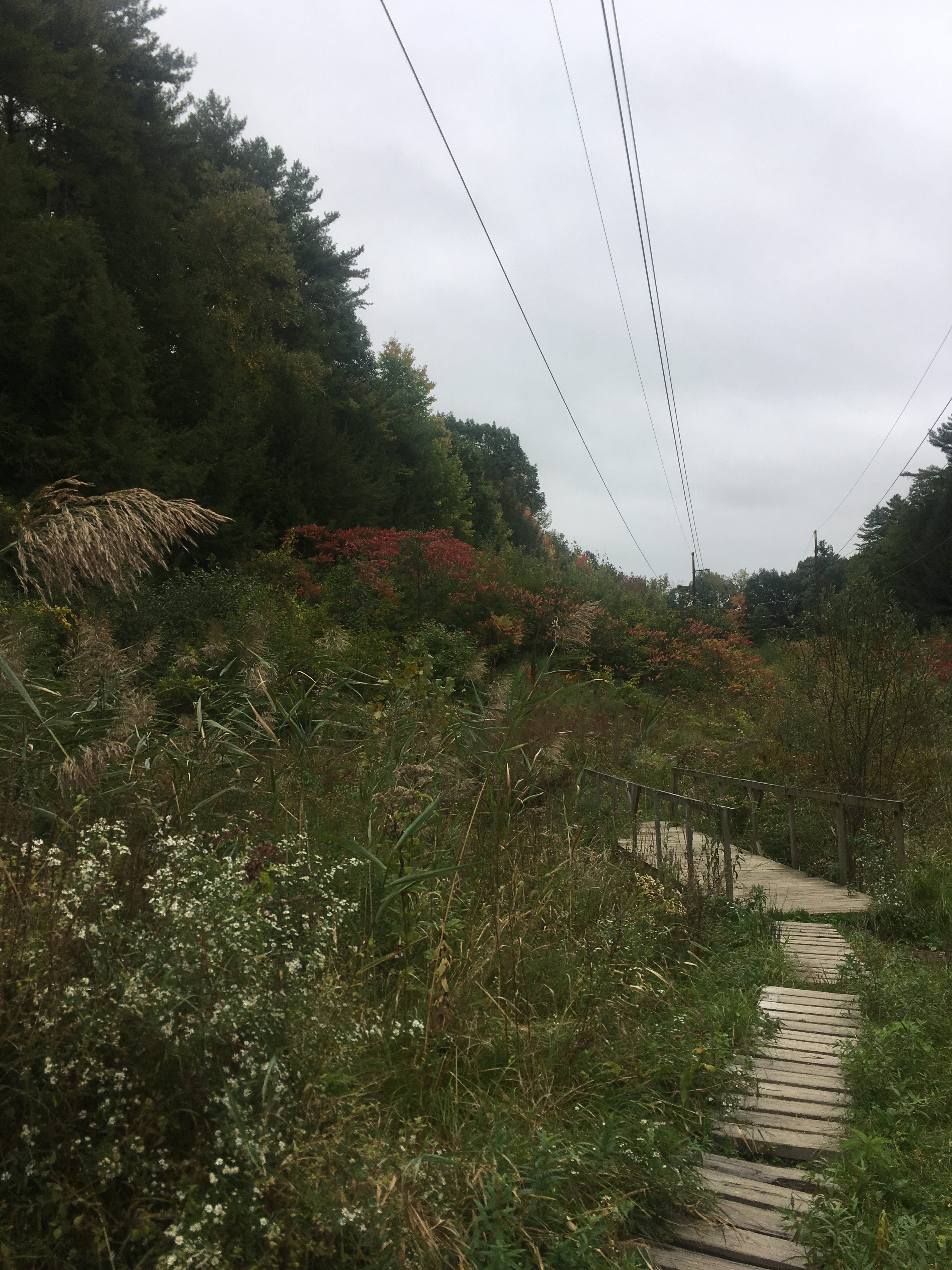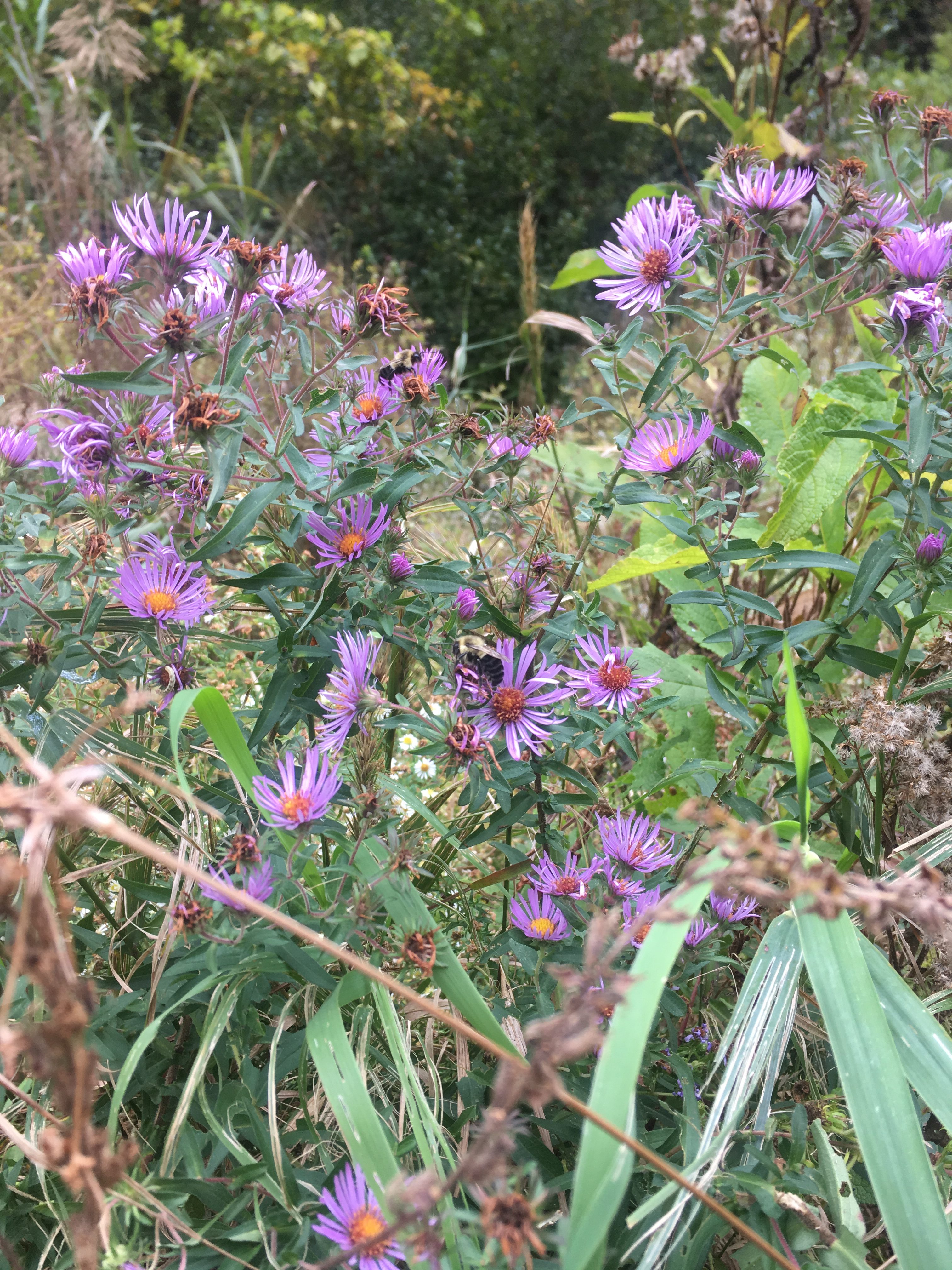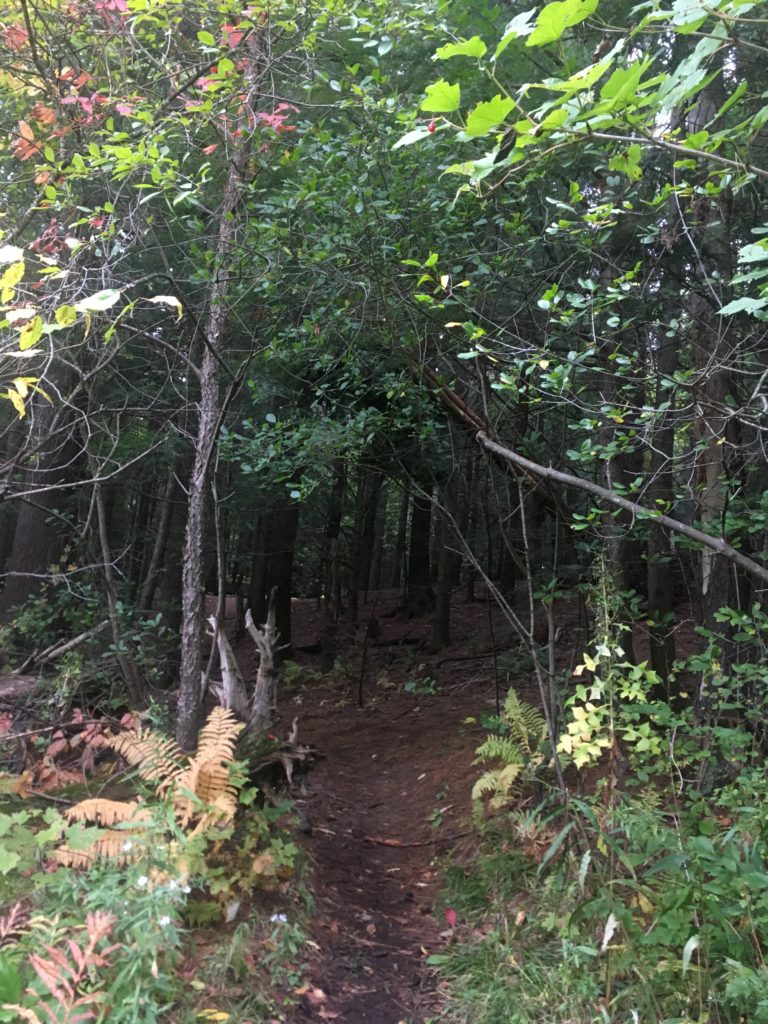Today I took a trip to my phenology site which is located in Centennial Woods Natural Area. To get there, enter the woods along Catamount Drive and following the main trail straight. The trail should lead you through wooded areas including over some platforms at muddier points. Once you get to the first clearing you will bear right, following the white arrow posted on a tree. Here you will walk along boardwalk and past the brook until you get to a larger clearing with multiple trails branching off. To get to my site take the trail straight ahead which continues into a mature hemlock stand. In a few minutes the hemlock stand abruptly ends as you reach an area that has been cleared for power lines. The trail will take a sharp right, and you will be able to see the bridge straight ahead.

This bridge is the center point of my site. I chose this spot because I love the contrast between the heavily disturbed swath of land that is cutting through beautiful intact evergreen forest. This area is completely cleared every four years to ensure that no growth becomes tall enough to interfere with the power lines. So, it is mostly meadow, with lots of tall grasses and flowering plants, and some woody shrubs and young trees. Centennial brook cuts through the center under the bridge, creating another point of interest for me as I think it will be lovely to watch changes in the brook (water level, life forms, etc.)
I would love to learn to identify the plants growing here. For now I was able to identify this New England aster, which had two slow moving bumblebees pollinating it. They are probably some of the last bumblebees to be pollinating before all but the queens die out for the winter.

I am also included the edge of the surrounding forest in my phenology site. This forest almost completely evergreen, and dominated by old growth eastern white pines and eastern hemlocks. In fact, Centennial Woods is home to some of the oldest hemlock trees in the state. At the very edge of the woods I also spotted some younger striped maples and white oaks. Here is a view of the entrance to the evergreen forest from the meadow.

I’m excited to revisit my phenology site and continue to explore it’s flora and fauna.
https://www.google.com/maps/d/edit?mid=1g1yJhfE2oFGNs95dmENFe4K1vFB37998&ll=44.48031193339838%2C-73.184891&z=18
-Luca

Hi, this is a comment.
To get started with moderating, editing, and deleting comments, please visit the Comments screen in the dashboard.
Commenter avatars come from Gravatar.